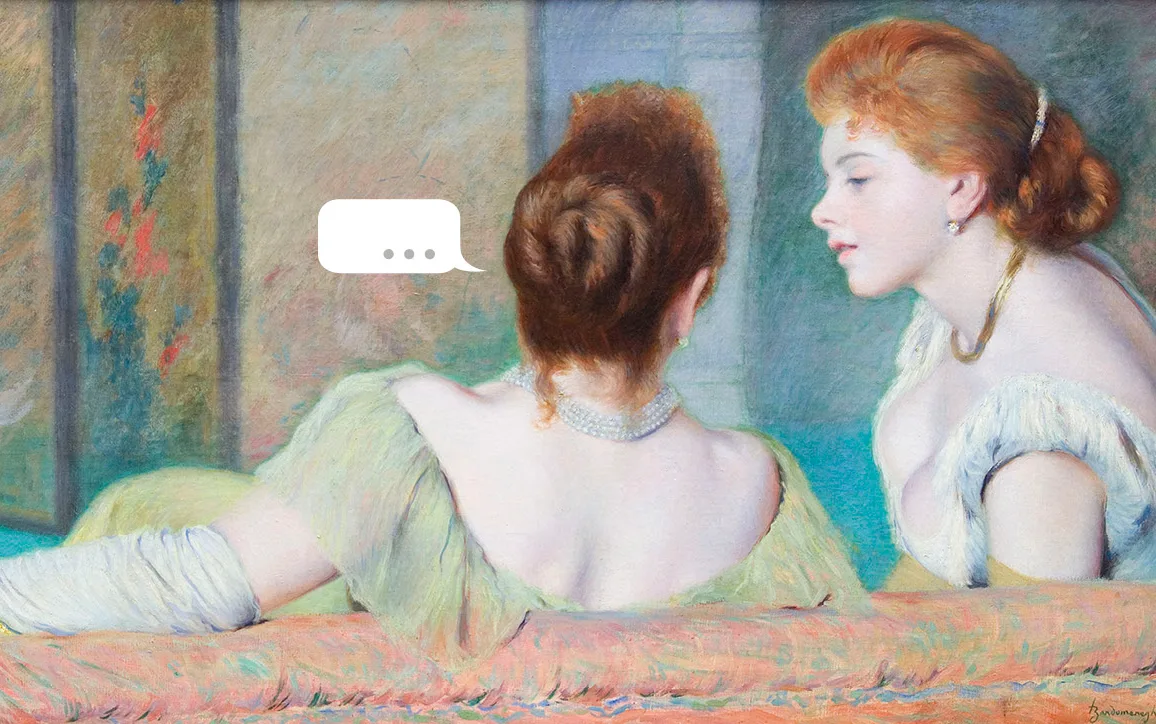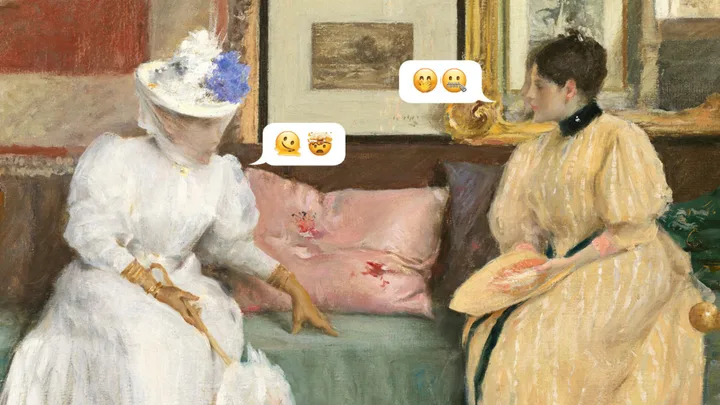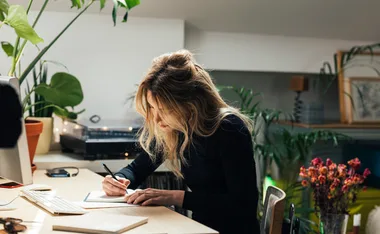The Friday knock-off drinks were casual, but I was nervous.
I was meeting my fiancé’s new work colleagues for the first time, and I wanted to make a good impression.
On the way to the pub, I rehearsed some small talk in my mind.
“How was your day, Alley?” “Great, thanks! I finally finished a book manuscript I’ve been working on for five months. Cheers to that.”
In my imaginary conversation, I clinked schooners with my new acquaintances in celebration.
In real life, however, the cheers-ing didn’t happen — because the question never came.
Sitting at a table in the beer garden, I happily introduced myself to my fiancé’s team.
Excitedly, I asked about the week that was and the weekend ahead. Curious, I asked about the big project they were working on, their roles and how they got into the field.
With every question, I waited for the serve to be returned. And waited. I realised I wasn’t playing conversational tennis; I was hitting a ball against a brick wall.
Don’t get me wrong — the people I met in the beer garden weren’t intentionally being rude or unsociable. They simply weren’t engaging in a two-way conversation.
I’m a journalist — I ask questions for a living — so I wasn’t fazed by doing the heavy lifting.
Although I couldn’t help but wonder (how very Carrie Bradshaw of me): Have we lost the art of conversation?
Having the thought was like finding my first grey hair. Once I started spotting signs, I couldn’t stop seeing them.
Traces of the downfall of “real talk” were everywhere. A former colleague, who had a baby at the start of the year, confessed that she can’t remember the last conversation she had that wasn’t about the baby.
My hairdresser revealed her apprentice suddenly quit when she gently suggested she could work on her small talk with clients.
And a friend who I caught up with after she spoke at a conference marvelled that no one at the two-day event asked her a single question about herself or her work.
“It’s like people have forgotten how to have a two-way conversation,” she said.
Three’s a trend. I knew I was onto something, and that I definitely wasn’t the only person noticing the slow death of our conversational skills.
I took all my very serious scientific observations to an expert. Simone Heng is a human connection expert and the author of Let’s Talk About Loneliness.
When I asked if she thought the way we communicate is changing, she didn’t hesitate.
“Yes, absolutely, there has been a loss in the art of conversation, particularly this idea of truly being seen and seeing others,” Simone confirms.
“We can track the rise of the loneliness epidemic as an indicator of a loss in conversation. Connection is a human need like food and water. When innate conversational skills like eye contact and active listening are eroded, this leads to greater isolation and loneliness. It’s the real depth of connection — being seen in an empathetic way by another human – that helps to soothe loneliness.”
The loneliness epidemic Simone is referring to is a global issue.
In 2022, it was described as one of the most pressing public health priorities in Australia. In 2023, the United States Surgeon General, Vivek Murthy, famously compared loneliness to smoking 15 cigarettes a day, explaining that both smoking and social isolation are deadly.
Furthermore, research out of the University of Chicago links loneliness to higher risks for a variety of physical and mental conditions, such as high blood pressure, heart disease, obesity, a weakened immune system, anxiety, depression, Alzheimer’s disease and death.
What has happened to the art of conversation?
It’s clear the loss of conversation is a major issue, but what’s causing it? The knee-jerk reaction is to blame technology.
Our opportunities for meaningful social interactions are limited because we wear noise-cancelling headphones on the bus, use an app to order our morning coffee, and mindlessly scroll through social media to avoid eye contact with strangers (or people we know and are pretending not to have seen).
Simone agrees the apps have played a part. “Social media has led to a lack of presence in conversations, particularly a lack of empathy,” she says.
“This has been observed in young kids who have grown up with text-based communication, leading to an inability to put themselves in others’ shoes … and difficulty for young people to identify and articulate their feelings.”

Of course, text-based communication has been around long before X was Twitter and Instagram was owned by Facebook.
Charles Duhigg, journalist and author of Supercommunicators, uses the term “asynchronous communication” to describe our reliance on texting and the subsequent delay in responding.
Guilty as charged; thinking about all my unanswered messages almost gives me hives.
“We don’t communicate in real-time as we often once did in person. We reply via text whenever we want, on-demand, in our own time. This takes away a lot of the skill that happens when we’re communicating on the fly in person, where we need to be witty and engage in banter,” adds Simone.
There’s also a growing fear of saying the wrong thing in this tense political environment. On platforms like X, the divide between the left and right has never been wider or more toxic.
There, communication isn’t a two-way street, it’s a one-sided soapbox. No entry. Wrong way, go back.
Sensitive conversations have become a battle to the death with only one winner. No one wants to be a loser. Or worse yet, cancelled.
As the world becomes more polarised and hate continues to grow online, having a real-life conversation can feel like walking a tightrope.
There’s so much to tiptoe around: Not just politics, but COVID, vaccines, lockdowns, gender, sexuality, crime rates, and clothing sizes.
We don’t “lean in” to conversations in the way Sheryl Sandberg encouraged us to in 2013. Instead, we lean away, afraid of backlash and confrontation.
As noted by the Association for Psychological Science (APS), “Many of us avoid discussing politics with someone who holds an opposing viewpoint, assuming the exchange will turn nasty or awkward”.
That, however, might not always be the case. A 2024 study by a group of behavioural scientists involving hundreds of participants found that strangers who discussed their political differences had a more positive experience than expected: “At least partly because people fail to appreciate the extent to which conversations are informative and draw people closer together”.
This is the rub: The only cure for the loss of conversation is conversation.
What is the key to mastering the art of conversation?
So, taking all this on board, I decide to become a better conversationalist. And my first step is to ask Simone Heng to share her secrets.
She starts me off with three tips:
- Mirror mirror: “Speak to people the way they speak to you,” advises Simone. “Match their tone, volume, mood and pace. This taps into our mirror neurons and brings us closer, despite our differences.”
- Listen up: “We live in a world full of talkers, and being of service in your communication can help you stand out. So listen first to what interests a new person you’re meeting and use your curiosity to ask them about it.”
- Silence is golden: “Avoid interrupting people. I’ve noticed interruption is more common now because our attention spans have become fragmented, making us bored more quickly. Interruptions prevent others from feeling seen and heard. It makes them feel dismissed and disconnected.”
I haven’t given up on the art of conversation
I channel my inner Simone and begin to focus on having better, deeper, richer conversations. Instead of asking my Uber driver the standard cliché question — “busy day?” —I wait for them to break the ice.
“Oh my God is that your dog?” the driver asks, nodding to my neighbour’s Rottweiler. “That’s our neighbour, Whiskey, but I do have two dogs. They’re just not very good at guarding,” I reply. “I LOVE dogs. Especially German Shepherds. It’s my dream to have a backyard so I can get one. That’s why I’m driving: To save up for a house.”
We spend the rest of the trip talking about our favourite dog breeds and brainstorming potential names for his future puppy. The chat was far more enriching and gleeful than discussing the morning traffic. I’m on a roll.
After being trapped in an endless text exchange (“Busy week, let’s catch up soon”) with a close friend, I do something utterly unexpected. I pick up the phone and call her. It is a revelation. Our catch-up covers work, family, and relationships, and lasts more than 40 minutes. Somehow, I feel lighter by the time we hang up.
Considering how hard I was concentrating on having meaningful conversations, I didn’t realise I was having one until I was in the middle of it. After running into friends of friends before a dance event, we settled into a booth at the venue.
Instead of the usual small talk, my new friend Josh posed a question to the group: “What was your first job?” He divulged he worked in his grandmother’s sewing store, which explained his impeccable dress sense and love of fashion.
Our mutual friend, Ilma, admitted she was a “truly awful” waitress, which led to her deep appreciation for good service.
And Peter revealed he was a beekeeper at an apiary in Italy, which didn’t explain anything about him, but led to a lot of follow-up questions.
A single, thought-provoking question led to a soul-nourishing conversation and a better understanding of my new friends. This is the power of conversation.
“What we gain through good conversation includes essential feel-good hormones, like oxytocin, the social bonding hormone, and dopamine. When we look into someone’s eyes and feel secure in that connection, it calms our nervous system,” says Simone, who encourages us all to make time for and put effort into real-life chats.
“Connection and conversation help alleviate the stress of modern life through social support,” she says, “which is a fundamental part of being human.”
We’ve all felt it. There’s a distinct rush that comes with having a good yarn. Conversations can uplift and unite us, and they can also challenge and change us.
That’s certainly worth fighting for. On that note, I’d love to hear about your first job. Do tell, I’m all ears.
This article originally appeared in the January 2024 issue of The Australian Women’s Weekly. Pick up the latest issue from your local newsagent or subscribe so you never miss an issue.

